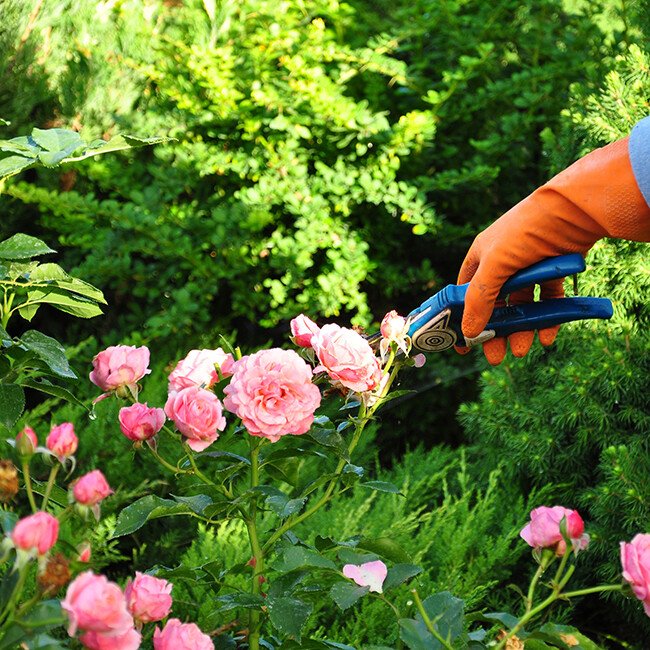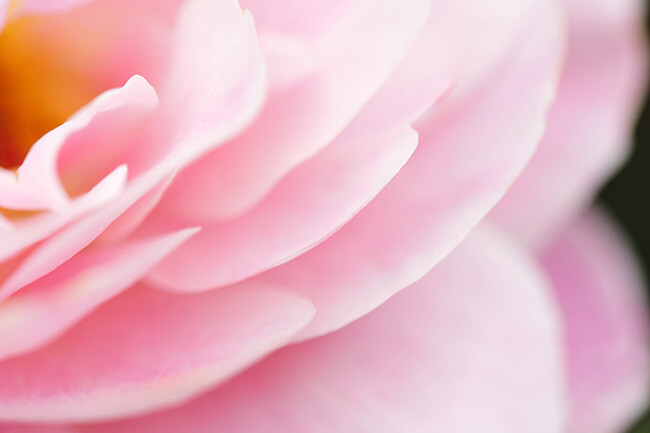
Roses are an asset to our homes and gardens; however people tent to steer clear of them under the misconception that they are difficult to maintain.
This is far from the case and pruning roses doesn’t have to be a difficult or intimidating task. In fact, there are a number of tips to make pruning more effective…
Why Prune Roses?
Colder temperatures have the tendency to produce unattractive, mottled blossoms, with yellowing foliage which regularly falls.
On top of this, rose hips may form, which can result in interrupting the next blooming cycle. This is why it’s extremely important to remove any dead blossoms.
Pruning roses also helps to rid the plant of diseased and dead stems, as well as canes, while also effectively managing the overall size of the plant.
Basic tips and tricks for pruning roses
For best results when it comes to pruning roses, complete this task post the final frost, and just before the plant breaks dormancy. In cooler climates, this will be between January and April, and in warmer climates, at the beginning of the year.
Wondering how much of the rose bush you should prune? This is a common question and one that needs to be asked, especially if you wish to preserve the wellbeing of your roses.
If the roses you are tending to are slightly older, prune them post blooming, as they bear flowers on the previous year’s wood.
Begin by cutting away the dead wood, as this will help you to see the rest of the plant more clearly. If you can, visit a public rose garden and view the exact specimens of roses you have as this will give you an idea of what they should look like when pruned – you may even be able to watch the local gardener complete this task.
If you live in a cold climate, there is usually only one option when it comes to pruning roses. Simply begin by trimming back the wood, which would have perished in the winter.
However, if you reside in a warmer climate, there are a number of different ways to prune roses. These include severe pruning, which translates to cutting the rose bush to reveal just three or four canes, measuring between six and 10 inches high. This will help your rose bush to yield fewer but larger blooms.
Alternatively, you can opt for moderate pruning, which means cutting five to 12 canes, measuring between 18 and 24 inches. This will help to encourage your rose bush to grow to a much larger size. Finally, light pruning requires you to cut back less than one-third of the plant, which helps to increase the number of short-stemmed flowers that will be produced.

Pruning Tools for Rose Bushes
If you wish to do the job correctly, it’s important to invest in the correct tools, including a pair of high-quality pruning shears. For best results, choose a pair of shears that feature curved blades. Equipment with a flat ‘anvil’ on one blade can crush stems instead of cut them.
Don’t be scared to spend a little more on quality tools, as they will make all the difference. Poor tools on the other hand can have a detrimental effect on your roses. If you’re unsure of which tools to choose, read reviews or select a recommended manufacturer with a good track record.
If you’re looking for a tool that is easy to use, choose pruning shears with a special handgrip, such as those with swivel grips – certain styles are even designed solely for left-handed people. If you’re short on storage space, opt for a pair with removable blades, as they will be easier to store away when not in use. If you’re pruning miniature roses, you’ll need to buy into a smaller pruning tool with smaller blades.
Additional equipment includes a pruning saw, which will help you to easily and swiftly remove large woody canes, with one clean cut as opposed to several, which could cause damage to the plant. The final tool to invest in is a pair of lopping shears – these boast handles measuring an impressive 12 to 18-inches in size. They are particularly useful to those wishing to cut larger trees as they provide the user with leverage, which is needed when it comes to attacking thicker canes. To protect your hands, opt for a quality pair of strong leather, puncture-proof gauntlet gloves.
Rose pruning principles
Step one: Prune back dead wood to reveal healthy tissue. Healthy tissue, if you’re unsure, looks a little like fresh, green bark and boasts a white pith core.
Step two: Use a drop of white glue to cover each cut in order to encourage a speedy recovery.
Step three: Ensure the centre of the rose bush is open, in order to inspire concentrated air circulation.
Step four: If the rose bush looks a little heavy, simply remove all growth from the main canes.
Step five: If you spot any root structure growths below the bud union, cut them extremely near to the main root cane.
Step six: Cut old woody canes as close to the bud union as possible, as this prevents lasting damage.
Step seven: Post pruning your rose bush, clean up debris from around the bush and eliminate any unwanted foliage from the canes. When discarding unwanted foliage, never place on the compost heap.
Step-by-step guide to pruning roses
Step one: When pruning roses, cut about 1/4 inch above a leaf axle at a 45-degree angle.
Step two: Pick an eye on the outside of the cane and cut down and away from your body. This encourages excess sap to upsurge, which in turn helps to seal the cut. On top of this, always prune towards an outward-facing bud in order to increase air circulation, particularly if you wish to encourage outward growth.
This method decreases the chance of disease, while promoting a more aesthetically pleasing shape. It also helps to prevent the cane from become warped and disfigured. Try to avoid cutting too close to the eye – anything less than 1/4 of an inch may damage the rose bush. Cuts measuring too high in diameter on the other hand will leave visible stubble, which acts as the perfect environment for pests and disease.
Step three: If there is foliage on your rose bush, it’s pretty easy to know where to cut, as the foliage will guide you. However, without foliage, it’s important to make a careful cut. For best results, find the dormant eye, which usually sits slightly risen from the cane – this will show you where the foliage was once connected.
Step four: If you plan to display roses in your home and wish to cut them directly from the garden, use exactly the same rose pruning technique. It’s important to ensure your rose pruning tools are sharp prior to use, as blunt tools may damage the plant. If you’re unable to do this yourself, take them to a hardware store or garden centre and enlist in the help of a specialist.
Step five: To avoid rust forming on your tools, remember to wipe any metal surfaces post use. You can do this using a lightly oiled, soft rag. On top of this, always store tools in a dry area, such as indoors or in a garden shed.